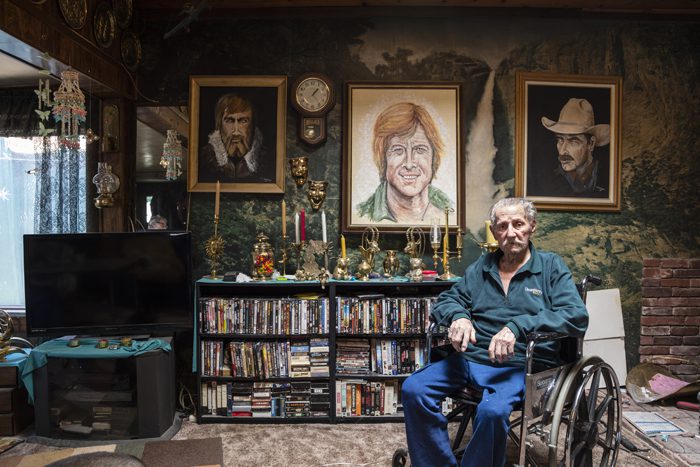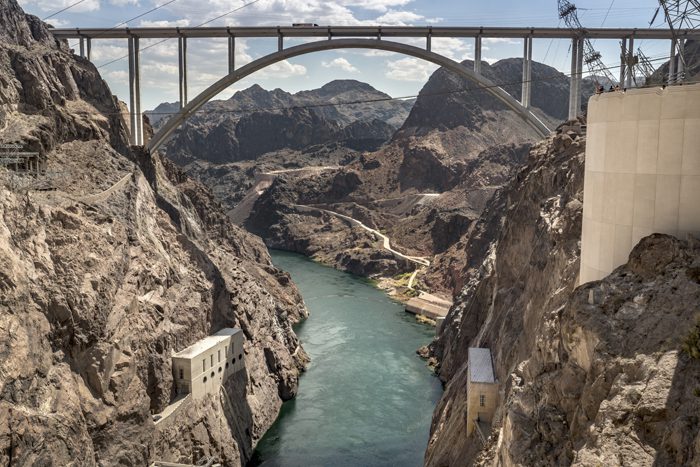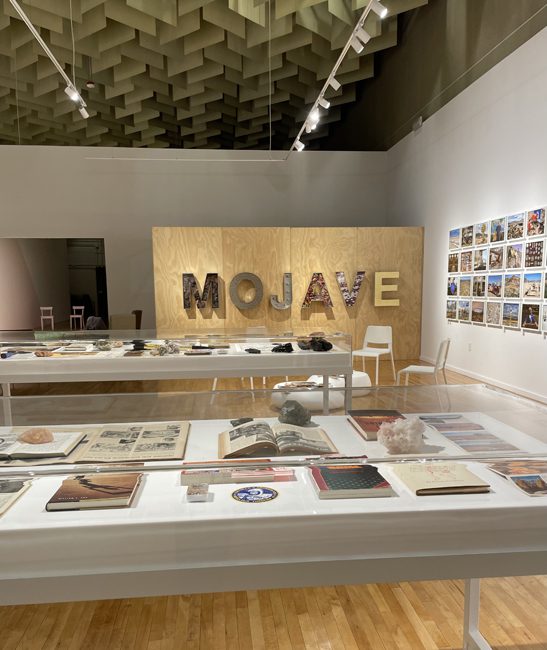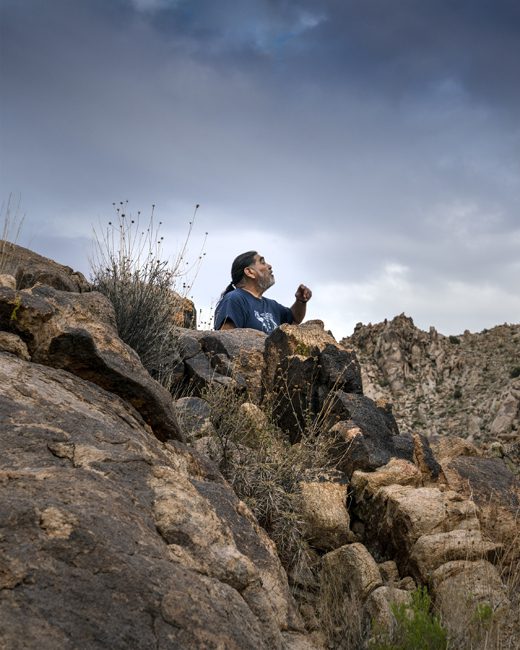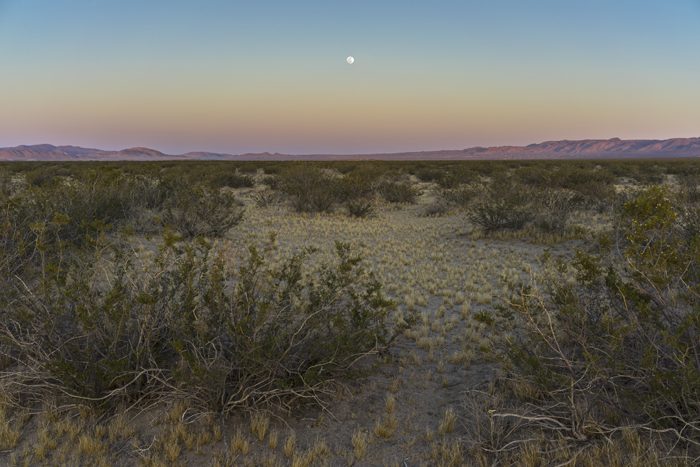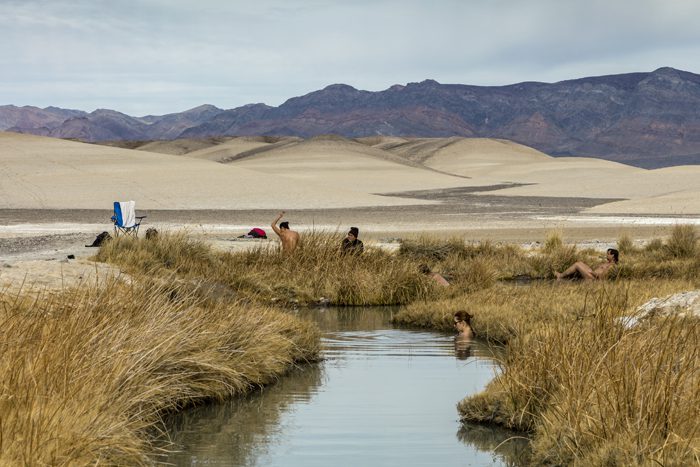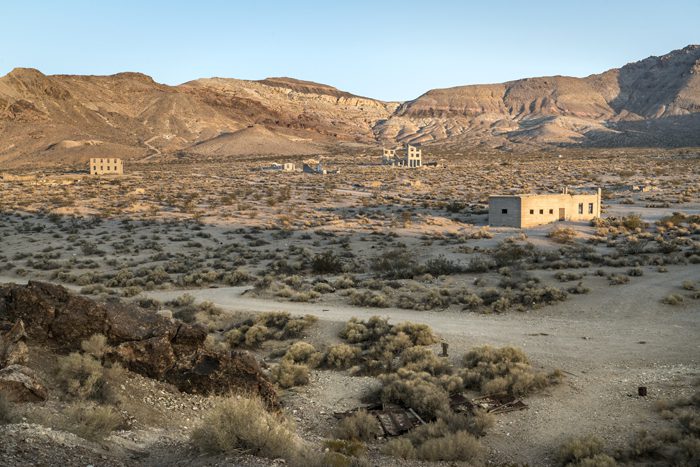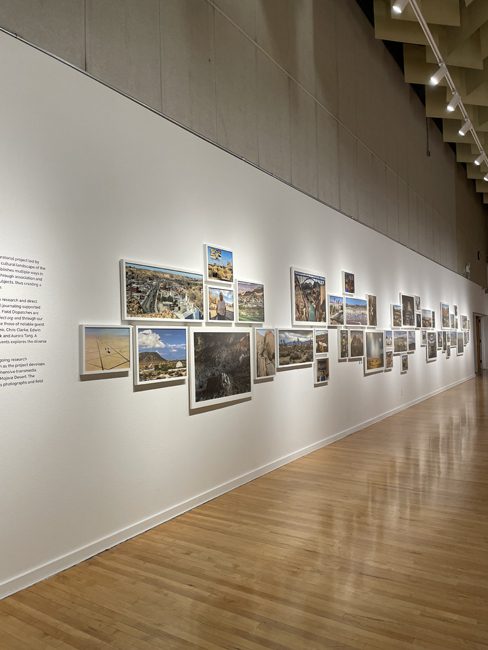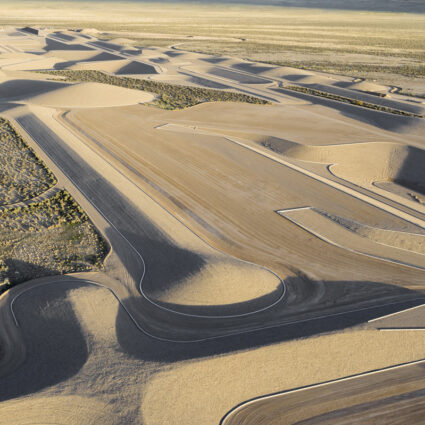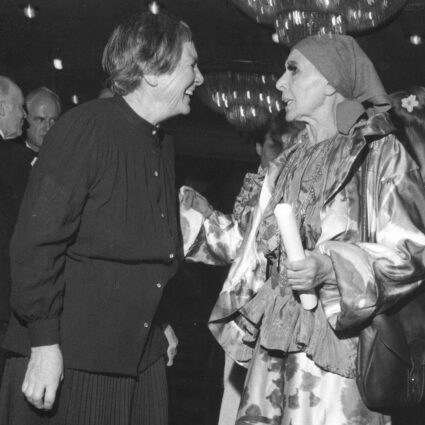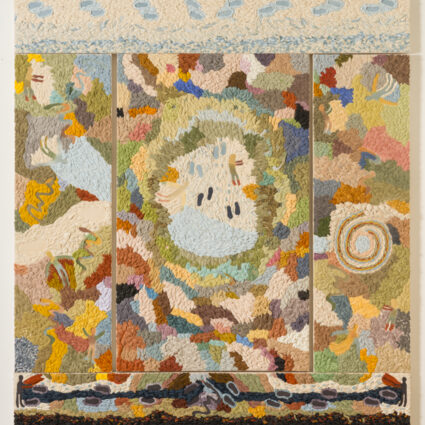Kim Stringfellow talks about the current exhibition of her The Mojave Project, which expands ideas of the Mojave Desert and its inhabitants through deep research and direct field inquiry.
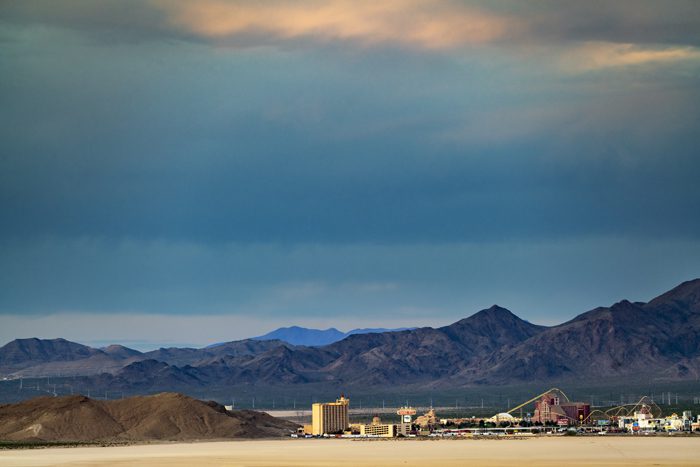
The Mojave Desert spans 25,000 square miles, populated by Joshua trees that diminish at the edges of other ecosystems. Initiated in late 2014, The Mojave Project by Kim Stringfellow takes a comprehensive, well-constructed, and considered deep dive into this land and its inhabitants.
The exhibition at the Marjorie Barrick Museum of Art (February 25–July 23, 2022) at the University of Nevada, Las Vegas, presents a rich experience of Stringfellow’s practice that includes photographs (the majority are Stringfellow’s with some by project contributors), maps, writings, and artifacts. According to The Mojave Project website, the project is a “transmedia documentary and curatorial project” that explores “the physical, geological, and cultural landscape of the Mojave Desert.”
Project themes give distinct vantage points: Desert as Wasteland, Geological Time vs. Human Time, Sacrifice and Exploitation, Desert as Staging Ground, Space and Perception, Danger and Consequence, Movement and Mobility, and Transformation and Reinvention. Visitors can also peruse (and purchase) The Mojave Project Reader, a collection of dispatches that were originally posted (and continue to live) online. The project’s website binds everything, organized for viewers to make their own connections to the Mojave Desert.
This interview has been edited for clarity and style.
Your work, based upon understanding and situating place, presents multilayered ideas through many media. Which aspect of your work do you recommend as an entry point for museum visitors?
It’s good to take in the installation first as an observer, then as a participant. Go through the exhibition and study to see if you can make relationships between the photos. It’s organized eclectically, reflecting the simultaneous occurrences of activities and people’s lives. Together, they convey the breadth and depth of human and nonhuman activity in the desert, how we benefit from it, or are a destructive force. For a deeper experience, go to the website and read about the photographs. As you’re perusing the site, hopefully something piques your interest to further delve into the content and the region.
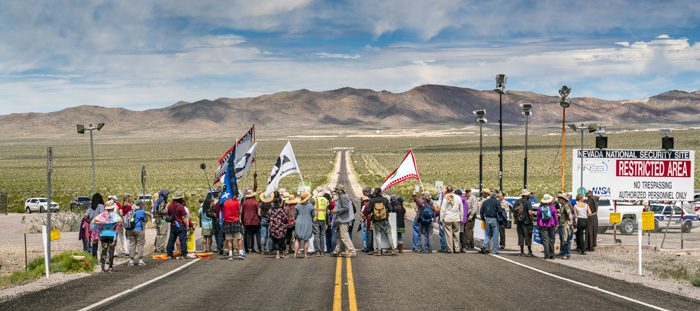
There are two striking aspects of the exhibition. First, the beautifully formal presentation of images. How did you determine the exhibition’s layout?
I’ve shown this project three times already. The venue’s architecture determines the span available for the presentation. The Barrick is much larger; it was a challenge to work with the long walls; thus, I established a salon-style installation. The ability to reprint and resize images to accommodate the Barrick made it more alive. A rhythm is established as you walk through the exhibition. Project themes then show where the stories emanated from.
Also striking are the three-dimensional letters that spell “MOJAVE.” Can you describe each letter’s symbolism?
I used commercial signage with depth so you can place materials inside them. “M” is filled with miner’s detritus found just outside of Rhyolite, Nevada; “O” is an aerial photograph of the King Clone Creosote in Lucerne Valley, near where I live in California; “J” includes lights as a reference to Las Vegas and other urban activities found within the desert; “A” is filled with shotgun shells, collected from various locations; “V” is a composite image courtesy of Gilles Mingasson of the Ivanpah Solar Electric Generating System near Primm, Nevada; and “E” is gold leaf, referencing the history of mineral extraction, one activity that brought Euro-Americans to the desert in the 1800s.
Standing in the center of the exhibition, the golden glow of the desert’s land and light is palpable. During the public talk you gave at the museum in March 2022, you indicated most images include a human presence. Why is that important to you?
Sometimes people aren’t aware of our impacts on ecosystems; it’s hard for them to be aware or notice our occupation and development. I avoid doing monumental, cinematic images of the landscape, which often don’t include humans. We are so present in places where we shouldn’t be: in a jet going across the sky, or simply on a road. It’s important to understand how we’ve reconfigured and manipulated, for good or bad.
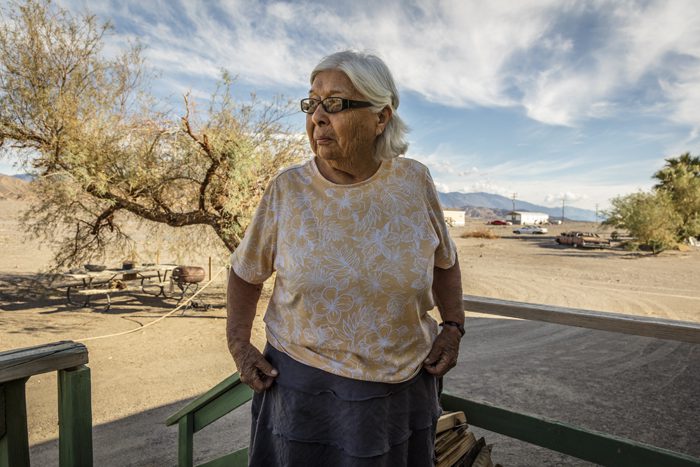
The webinar series offers another way to enter your project (past webinars are found on YouTube). Upcoming discussions include “Indigenous Perspectives of the Mojave Desert” (June 23, 2022) and “African American Homesteading in Lanfair Valley” (July 21, 2022), the first of which you describe as “the highlight of our programming series.” Talk about what that means to you.
Those are voices that have been excluded from the conversation. For example, involvement is very recent for the Timbisha Shoshone, recognized as a sovereign tribe, who now control forty acres of their ancestral homeland within Death Valley National Park. What are the current issues for the Indigenous people in the Mojave Desert? A member from the Native American Land Conservancy will moderate, to have that narrative told by people who are germane. It’s a constant issue of representation for Indigenous Americans: let’s let people represent themselves.
During your public talk, you mentioned future dispatch topics, including the growing footprint of the military in the Mojave Desert. Can you expand on other topics you’re looking toward?
Working on industrial solar and wind and how extraction of resources fits into that economy and the complexity of what that means for us. (For more on this topic, check out the webinar on YouTube). Additionally, working on the Colorado River and water issues, which I return to quite a bit in my work.
At end of the “Big Desert Solar and Wind—But at What Cost?” webinar, you asked participants about watershed moments that led to their work. What was your watershed moment?
The Salton Sea project in the mid-1990s. I visited a former teacher who was living in Slab City on the sea’s east side. I camped out there and witnessed alternative lifestyles. This was new: I saw it as a metaphor for our future and the massive impacts we have on the environment. I didn’t have the language back then to bring this all together, it came together a few years later. [See Stringfellow’s book Greetings from the Salton Sea.]
In closing, what do you believe are the most pressing concerns for the Mojave Desert?
Climate change is a concern. We’re undergoing such profound changes, scientists and researchers are even confounded by how quickly things are progressing. The world of extraction is another concern: it was the first reason Euro-Americans made their way west; it’s still an ongoing process. Extraction processes need to be done correctly, considering long-term impacts. By taking out complex ecosystems, are we shooting ourselves in the foot? There’s still so much we don’t know.
